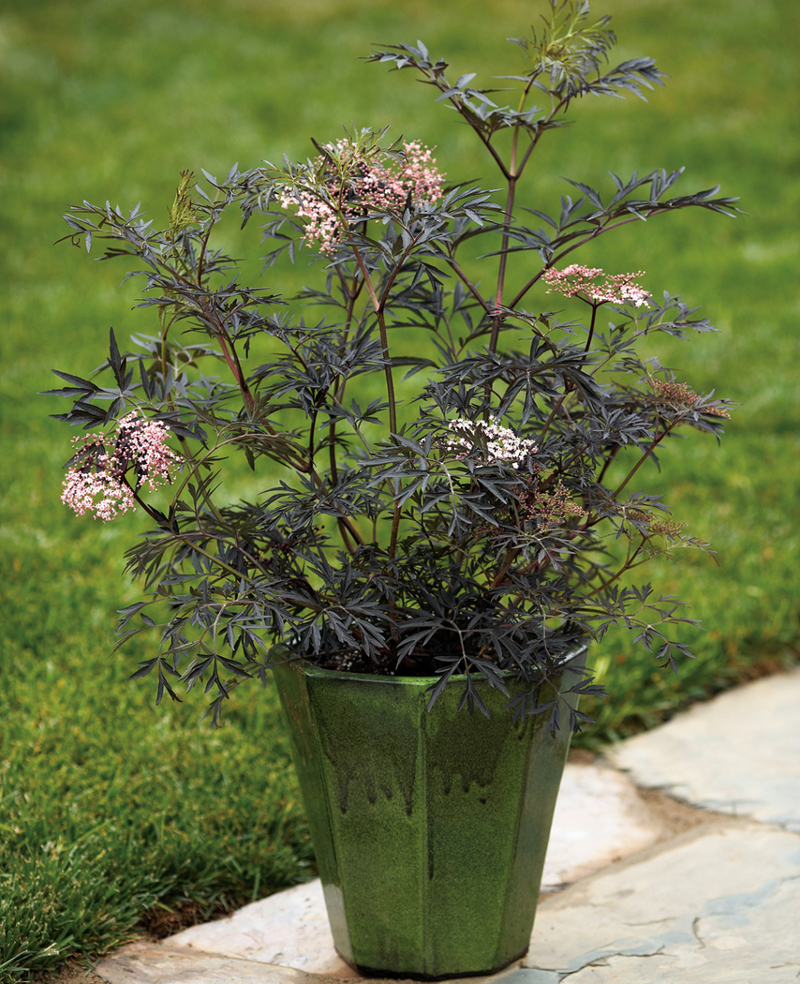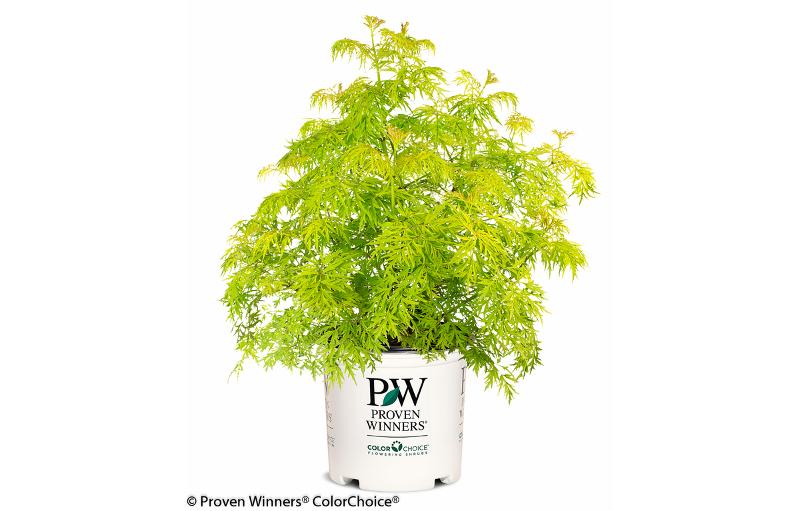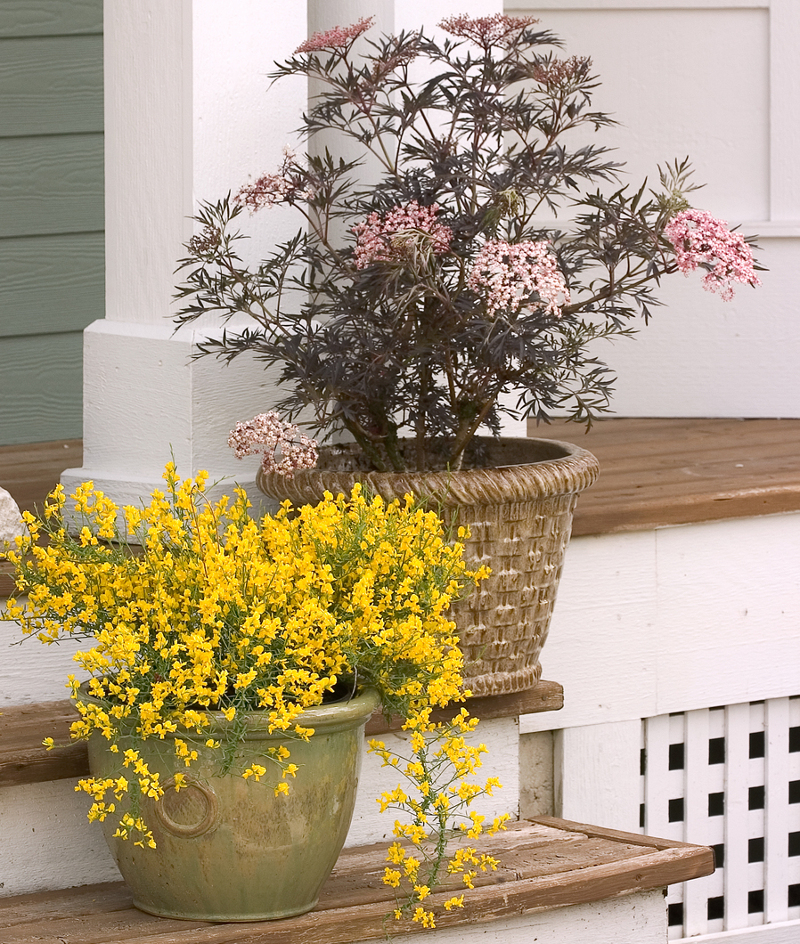Native to North America, elderberry plants thrive in wild and domesticated landscapes alike. But can you grow elderberry plants in pots or planters? Yes, it is definitely possible - with a bit more care to ensure a healthy and thriving plant. Elderberry plants in a planter or container should have plenty of space to grow and be placed in a full sun location.
Due to the size, large containers and pots need to be used as root and limb growth is quick! Ensuring that the soil you use allows proper drainage will protect the roots from being submerged or worse, frozen due to too much standing water in the winter.

Planting Elderberry in Pots
Elderberry plants go dormant in winter and are deciduous in nature, so don’t freak out when your plant is bare! With that said, elderberry plants can be in containers year-round as long as the container is large enough for the base of the plant. A good rule of thumb is to allow at least one foot of space between the root base and the walls of the container you wish to plant your elderberry in.
More than likely, this is going to be a rather large container - so keep this in mind when deciding if you should plant in a pot, container or in the ground. Your container or pot of choice should provide ample drainage with holes on the bottom. Small stones laid at the bottom will provide extra drainage if your container/pot of choice isn’t abundant in drainage holes. Most importantly, ensure your elderberry has access to full sun daily throughout spring to late fall.

Best Soil For Elderberry in Pots
When planting your elderberry in a container or pot, mix in compost with a mixture of topsoil and native soil for extra nutrients. This is especially important since it will be establishing itself in a new environment with minimal naturally occurring nutrients. An ideal pH is between 5.5 - 6.5 and pH amendments are best added when first planting.
For great drainage, if your container or pot of choice isn’t abundant with drainage holes, add a layer of small stone at the bottom. During the winter, adding a light layer of shredded wood mulch will protect the shallow roots from frost damage. Mulching is also beneficial in keeping the weeds at bay. Weeds tend to pull necessary nutrients away from the elderberry, so year-round mulching is perfectly fine as well.
Caring For Elderberry in Planters
Although the size of elderberry plants can be a bit intimidating, with proper care, elderberry plants can indeed be kept in containers or pots. Keep in mind that annual pruning will be necessary to prevent overcrowding. This can be achieved by pruning older or damaged limbs and upsizing the container or pot as necessary.

Watering Elderberry in Pots
Wild and domesticated elderberry plants alike thrive from 1”-2” of rain per week. In periods of drought, occasional watering may be necessary through irrigation or direct watering. Ensure that the soil does not get dry and on the contrary, doesn’t get submerged and you will have a healthy and thriving plant!
Fertilizing Elderberry in Pots
Fertilizing in containers or pots can be a bit finicky. If you add too much, the balance of nitrogen will be too high and will inhibit flowering and fruiting. Observe your elderberry for at least one month by watching for green, luscious growth or lack thereof. If the growth is green and luscious, limit fertilizing by cutting the usual in-ground amount in half (in-ground fertilizing with ammonium nitrate is recommended to be 1/8lb per growth year, up to 1lb) so 1/16lb or 1oz per growth year.
If your elderberry could use a boost, use the in-ground recommended amount of ammonium nitrate at the rate of 1/8lb per growth year, up to 1lb. Do this once annually in early spring for best results. Remember that observing the plant’s growth the year prior will largely benefit you in deciding how much fertilizer to use.
Winter Care For Elderberry in Pots
With the proper size container or pot chosen, adequate drainage, and light mulching over the shallow roots, you are all set to allow your elderberry to go dormant outside. It is not necessary to bring in your elderberry unless you live in a zone below 3. If you live in a colder climate (zones below 3), you will want to bring in your elderberry to an unheated garage, basement or other applicable room.
Growing Elderberry Indoors
Elderberry plants are large in nature, so ensure your space is big enough for a plant that is at least 6ft tall and 3ft-6ft wide. You can prune when the plant is dormant, but growth is quite rapid during the summer months. It is necessary for the elderberry to go dormant for flower and fruit production, so be sure to place it in an unheated garage, basement or other applicable room in winter until early spring.
From spring until fall, your elderberry will need access to full sun for proper flowering and fruiting. Manual pollination will also need to be done for fruiting to happen. This can be done with a q-tip or other measures. Ensure your elderberry plant has plenty of moisture in the soil without being submerged in water. Also research the toxicity with elderberries to ensure it is a fit within your household. With great care, elderberry plants can be grown indoors if outdoor planting is not ideal.
 |
Author Chris Link - Published 01-15-2022 |
